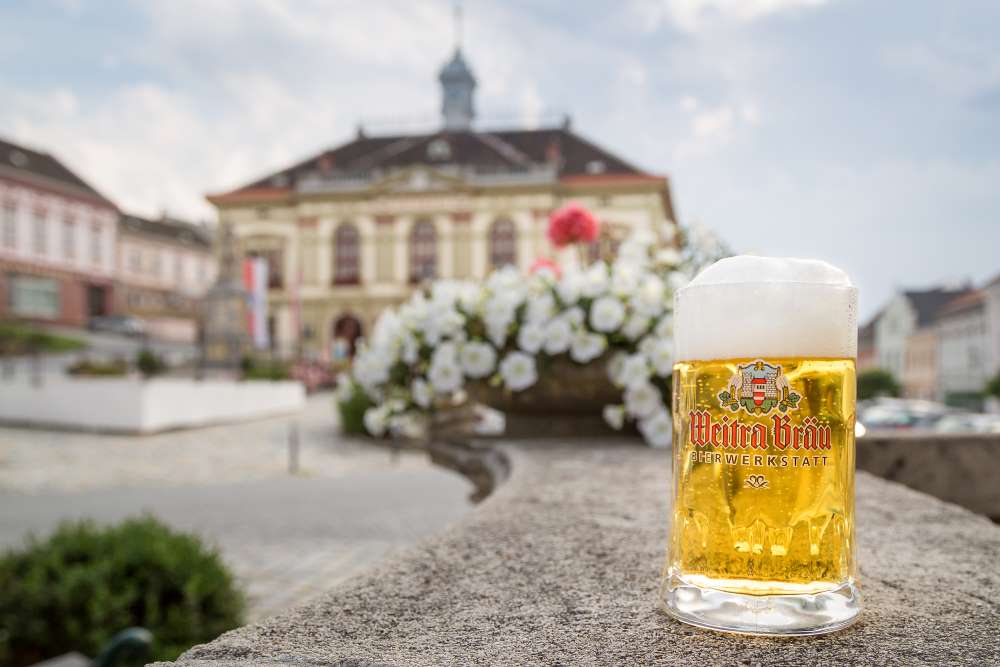Beer & Brewing
The „Weitra Beer Path“ can be visited from the end of April.
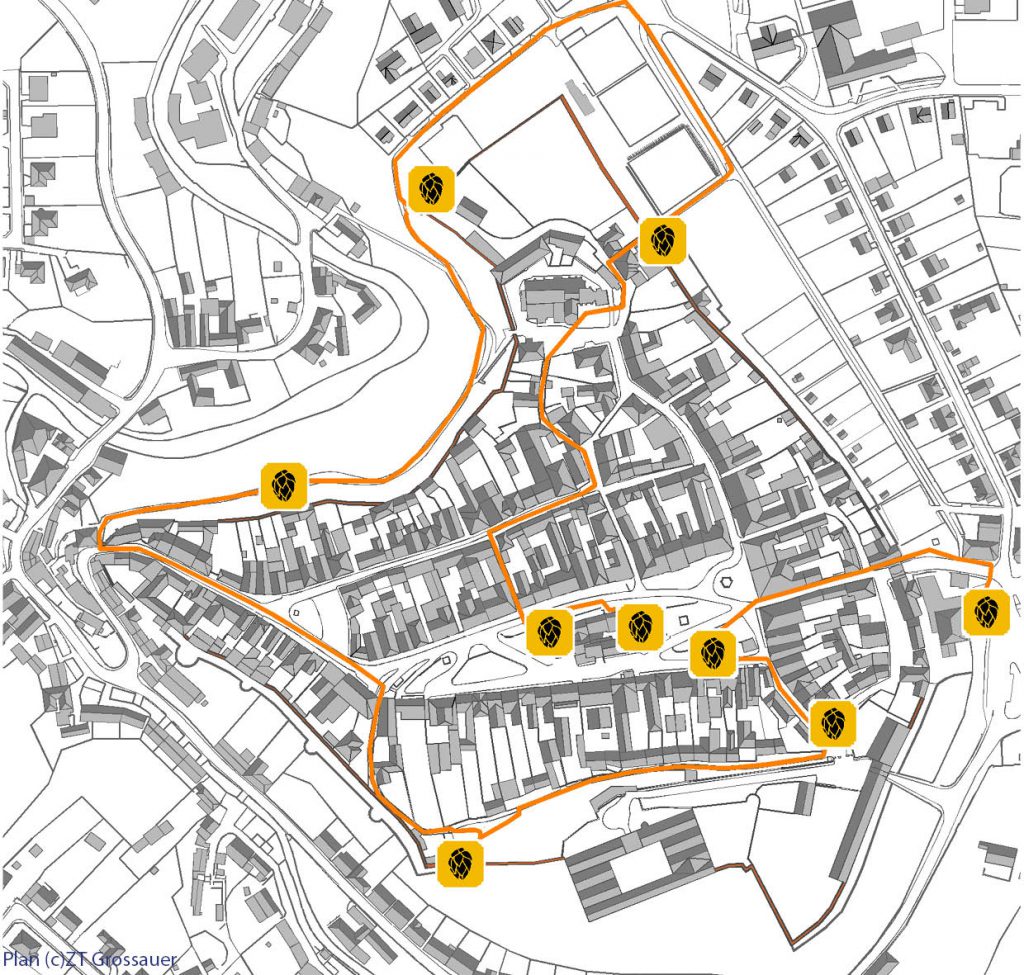
Weitra has – as oldest brewery town in Austria – a long tradition brewing beer. In the 17th century there were 2 breweries and 33 town houses, which were allowed to brew beer. In the course of time the education of the brewers has been professionalized and technical developments have made the brewing processes easier. Highest standards regarding the ingredients were the reason, that beer has involved into a quality product.
Here at the brewery “Bierwerkstatt Weitra”Das Helle”, „Hadmar“ and „Das Schwarze“ as well as other beer specialties are brewed.
So, what are the ingredients of beer?
Malt: Brewing gain (usually barley) is made to germinate allowing the enzymes essential for the brewing process to form. Afterwards the seeds are dried and milled.
Yeast: Yeast is needed to convert sugar into alcohol.
Hop: Hop gives beer the desired flavor and increases durability.
Water: Soft water, like the water here in “Waldviertel”, is best for brewing. Its characteristics have a big influence on the quality.
The trend of craft beer adds more ingredients to the four basic components, such as herbs and other natural ingredients. That´s the reason for new and exceptional taste experiences.
Until the 16th century occasionally hallucinogenic substances (wild rosemary, henbane) were added to beer to intensify the effect.
Sometimes no additives are needed to expand the consciousness.
Turn the wheel and see for yourself!
Beer & Citizenship
In 1321 Friedrich der Schöne (Friedrich the fair) gave the citizens of Weitra the right of brewing and serving. This was the essential basis for the economical primacy in the following centuries. The architecture of the town houses still shows the wealth of the town. The houses around the medieval square have been modified during the last centuries. So nowadays you will find different architectural styles. You will find small information boards on the houses with the “right of brewing” to remind of the former privilege.
The rays of brass show the way to important buildings in the old town.
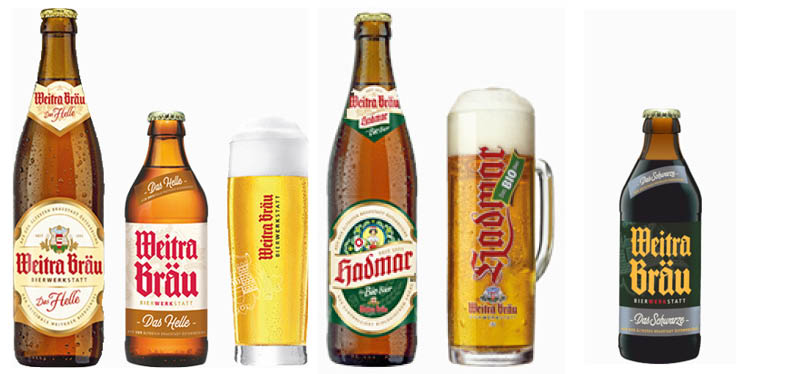
Beer & Iron Curtain
Once people from 40 countries have been separated by an insurmountable border. Brewing and beer drinking remain as connecting element.
You can find more information on the history of the Iron Curtain in an exhibition at the castle of Weitra!
In the Czech Republic beer is being brewed since the Middle Ages. The town “Pilsen” got the right for brewing in the year 1307. The “Pilsner Urquell” is the forefather of this kind of beer (bottom-fermenting beer with a strong distinctive hoppy aroma and a rather low alcohol strength of 4,4 Vol.%). In 1842 this kind of beer has been brewed for the first time in this west bohemian town (at the time part of the Habsburg empire).
Another global brand is the Budweiser Budvar. This fruity beer from the town České Budějovice is brewed with water from a subterranean lake since 1895. Not to be confused with the US-american “Budweiser” – there is a long going name dispute between these brands. The Czech Budvar is sold in the USA as “Crystal”.
Due to the neighborhood of Austria and the Czech Republic there are many colloquial words which show the linguistic proximity.
Test your knowledge on the basis of the words on the badges!

Beer & Landscape
Hop belongs to the family of hemp and is – in addition to several types of grains – an integral part and flavorful addition to beer. Only the female, unfertilized hop cones are used for brewing. Hop is also needed to prevent the formation of disease-causing germs.
In Austria growing hop is known since the 12th century. During the 1st world war, the cultivation of hop was forbidden for the benefit of cultivating grain. Only in 1987 hop growing started again in Waldviertel. Nowadays hop is grown on 17 ha for the breweries in this region.
The Czech Republic has the biggest hops areas worldwide. For many centuries the region around Žatec has been well known for particularly high-quality hops.
In former times hop has been cultivated on 3-meters-hop-poles. Nowadays the hop is cultivated on a wire frame, a method invented the late 19th century in the region of Žatec.
In the past hop has been cultivated at the slopes of the valley “Gabrielental” nearby Weitra. Today only the terraces are recognizable.
Give your creativity flow and let´s imagine, how the landscape would have probably looked in former times.
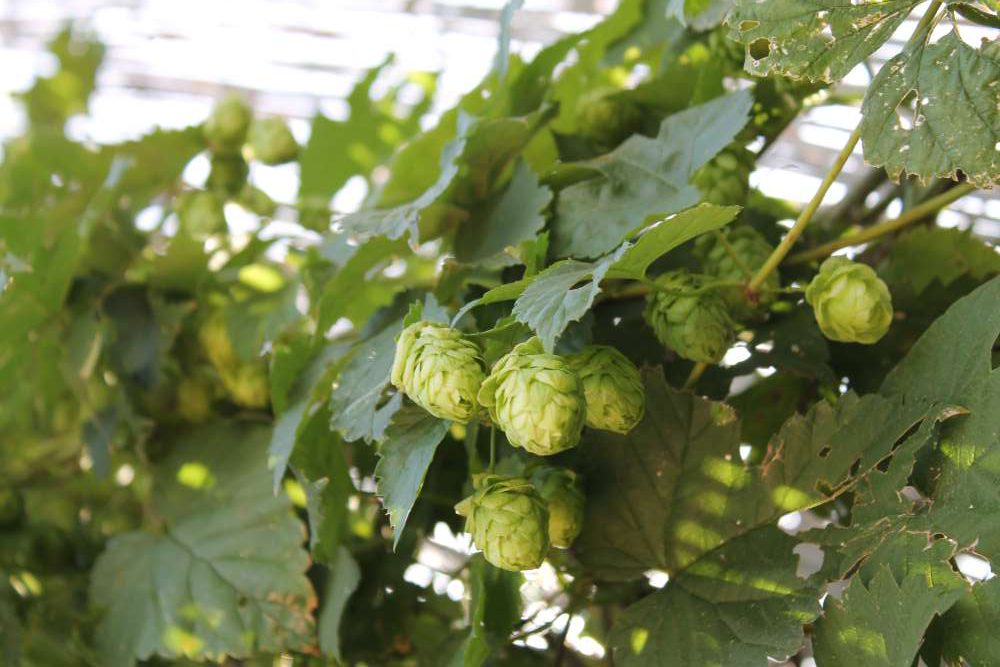
Beer & Industry
Middle Ages
The success of brewing was usually pure luck as the effect of yeast was unknown. For the Englishmen it has been “God´s spook”, for the Swiss the work of “beer witches”.
Louis Pasteur (1822 – 1895)
In 1861 the French chemist Louis Pasteur discovered the mode of action of yeast. With this knowledge brewing improved.
Carl Paul Gottfried von Linde (1842 – 1934)
In 1876 the German inventor developed the first ammonia-compression refrigerator for the Dreher brewery in Triest. As a result, brewing was possible for the first time regardless of outdoor temperatures. Up until this invention bottom fermented beer could only be brewed in the winter months, as a temperature between 4 and 9 degrees were needed.
Lorenz Adalbert Enzinger (1849 – 1897)
The German inventor developed a filter system for beer in 1878, which was the basis for modern filling technology.
Electricity
At first nac the machinery for brewing was driven by steam and was progressively substituted by electricity.
In 1902 a power station was built on order of the town Weitra. This power station produced electricity until 1954. The weir is still located at the mouth of Wultschaubach / Lainsitz. The building of the power station was demolished in 1970. On its former site you can find a small power station.
You can produce electricity with your own muscle power. The pedals are connected with the lantern. Sit down on the bicycle and try if you can light up the lamp!
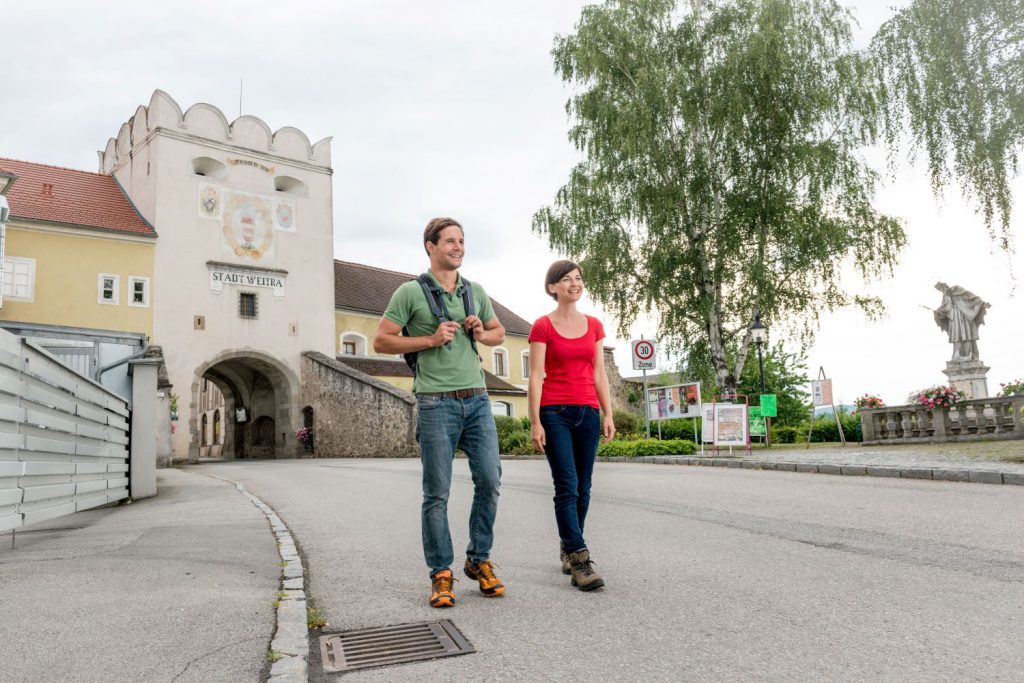
Beer & Protection
Weitra has been founded in the 13th century by Hadmar II of Kuenring. The town is nearly completely surrounded by ancient city walls. This wall was first mentioned in a document in 1292.
The only way to get into the town was using one of the two city gates.
1. Upper city gate
Built in the present form in 1526.
2. Lower city gate
Torn down in 1885. Nowadays the entrance to the promenade is located at its site.
The protection of the “Right of Brewing”
The right of brewing included a zone of 7,57 km radius around the town of Weitra. Only the citizens of Weitra were allowed to brew beer within the zone.
Move the bottle opener along the city walls without touching them!
Beer & Believe
For a long time, beer was known as pagan drink and was scorned by the church, particularly in Rome, where wine was mainly drunk. But in the northern regions of Europe, beer has been brewed in monasteries demonstrably since the 9th century. Not only for personal need, but for pilgrims and needy people as well. Over the centuries brewing became a lucrative source for monasteries. For example beer has been brewed for many years in the monastery Zwettl, about 27 km from Weitra.
Furthermore, beer was an important foodstuff in monasteries during the lent. Monks were allowed to drink up to 5 liters of beer daily.
Because:
Liquida non frangunt ieiunium.
Liquid doesn´t break the fast.
Many saints prove the importance of brewing. The former pagan protection gods have been replaced by catholic saints!
St. Florian: patron saint for firefighters, brewers, potters and many more
St. Bonifazius: patron saint for brewers and tailors
St. Arnulf: patron saint for brewers and millers
St. Augustinus: patron saint for theologians, brewers and printers
Originally beer was poured into cups. Already in the 15th century beer mugs with a lid were used. The material of the mugs – stone, porcelain, tin, silver or glass – changed during the centuries. Some of the mugs were rather precious due to elaborate decorations.
Nowadays beer is served mostly in glasses in many different shapes. One of these shapes is the “dimpled mug”.
The dimples provide stability, as well as optical improvement. A useful effect: due to the cutting turbidity was invisible.
What do you think to see through the glasses? Have a go!
Beer & Water
Water is essential for all of us. But the water quality hasn´t always been as good, as we are used to now. It hasn´t always been a good idea to drink water, as wells and streams were often contaminated. When brewing beer those germs are killed off. Nevertheless, water quality has a big significance for beer brewing.
Beer is 90% water.
Soft water is used for light beer. This is the reason why water of Bohemian Massif is best for “Pilsner” beer.
Hard water is more likely used for dark beer.
Salts, such as calcium, magnesium salts, influence the fermentation process and hops.
Acid effects the heaviness of the beer and the effect of hop bitters. Modern analysis methods inform about the composition of water.
Wells were very important for supplying the population with water.
Right in the center of Weitra there is a medieval cistern from the 14th century. Around the year 1500 a gothic pointed arch was built to strengthen the walls.
Over the years the cistern has fallen into oblivion and was rediscovered only in 1983. The cistern gets its water from groundwater, rainwater and overflow of a well at “Rathausplatz 23”.
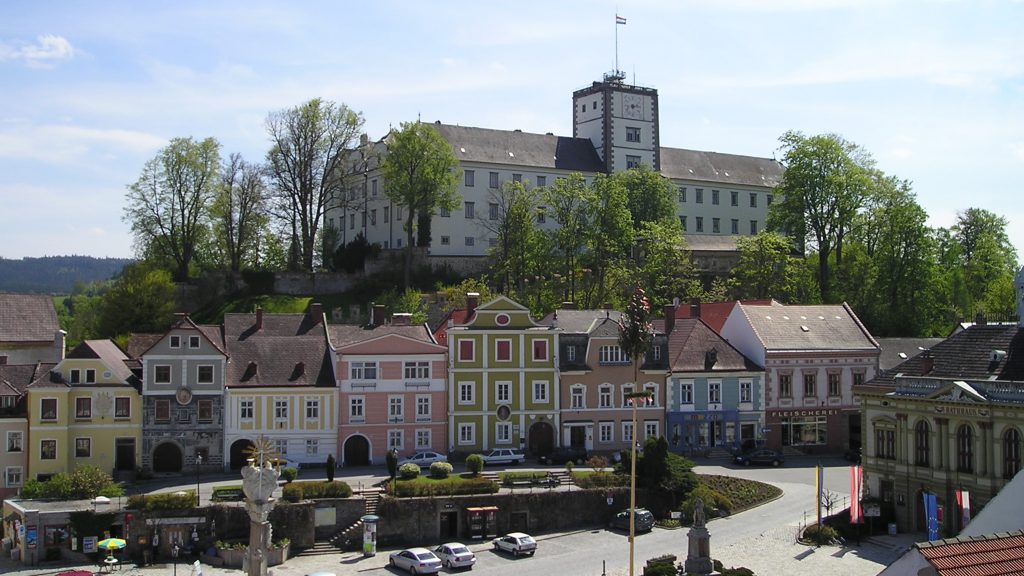
Beer & Municipality
Before 1182
Foundation of the parish Weitra by the Kuenringer dynasty, originally in “Altweitra”
1201 – 1208
Systematic planning of the city of Weitra by Hadmar II of Kuenring
1296
The new sovereigns – the Habsburg dynasty – take control over the city of Weitra
1321
The Austrian sovereign King “Friedrich der Schöne” grants privileges to the citizens of Weitra, including economic and judicial privileges. Part of these privileges was the right of brewing and serving beer within a zone of app. 8 km around Weitra.
1340/1341
The former judge of Weitra, Chunrat Marchart and his wife Margarete found a hospital to provide people in need.
1360
Duke “Rudolf IV.” confirms and expands the privilege of 1321.
14th/15th century
Farming citizens are the basis of the citizens, but trade and business get more and more important – many new professions arise: baker, binder, turner, butcher, tailor, smith, cobbler
15th/16th century
Because of financial problems, the Habsburg dynasty pledge the fiefdom Weitra to noble lords. These pledgees question the local autonomy including long and violent disputes.
1577 – 1580
Building of the municipal brewery (Rathausplatz No. 58)
1581
Emperor Rudolf II donated the fief of Weitra to “Wolf Rumpf Freiherr zu Wielross”. As from 1592 he was the owner of Weitra. Wolf Rumpf built – instead of the old fortress – the massive castle, in Renaissance style.
1607
After the death of Wolf Rumpf (1605) and his wife Maria (1607) the Fürstenberg dynasty become the owner of Weitra.
17th century
Brewing is getting more and more important in Weitra. Brewers receive vocational training and they found even a brewer´s guild, with members from Weitra, but nonresident brewers from the whole region as well.
1722/1723
The long-going dispute between the citizens and the Fürstenberg dynasty comes to an end – to the disadvantage of the people of Weitra.
1727
A new guild is founded in Zwettl – and Weitra becomes less significant. Nevertheless, there are still some breweries in Weitra.
19th century
There are four breweries in Weitra left.
1903
Opening of the Narrow-Gauge Railway, southern section: Gmünd – Weitra – Groß Gerungs.
1976 – 1993
Renovation of the inner city of Weitra
1994
NÖ Landesausstellung (Lower Austrian Regional Exhibition) in Weitra
2021
Weitra is celebrating „700 years brewing town” as oldest brewing town in Austria.
